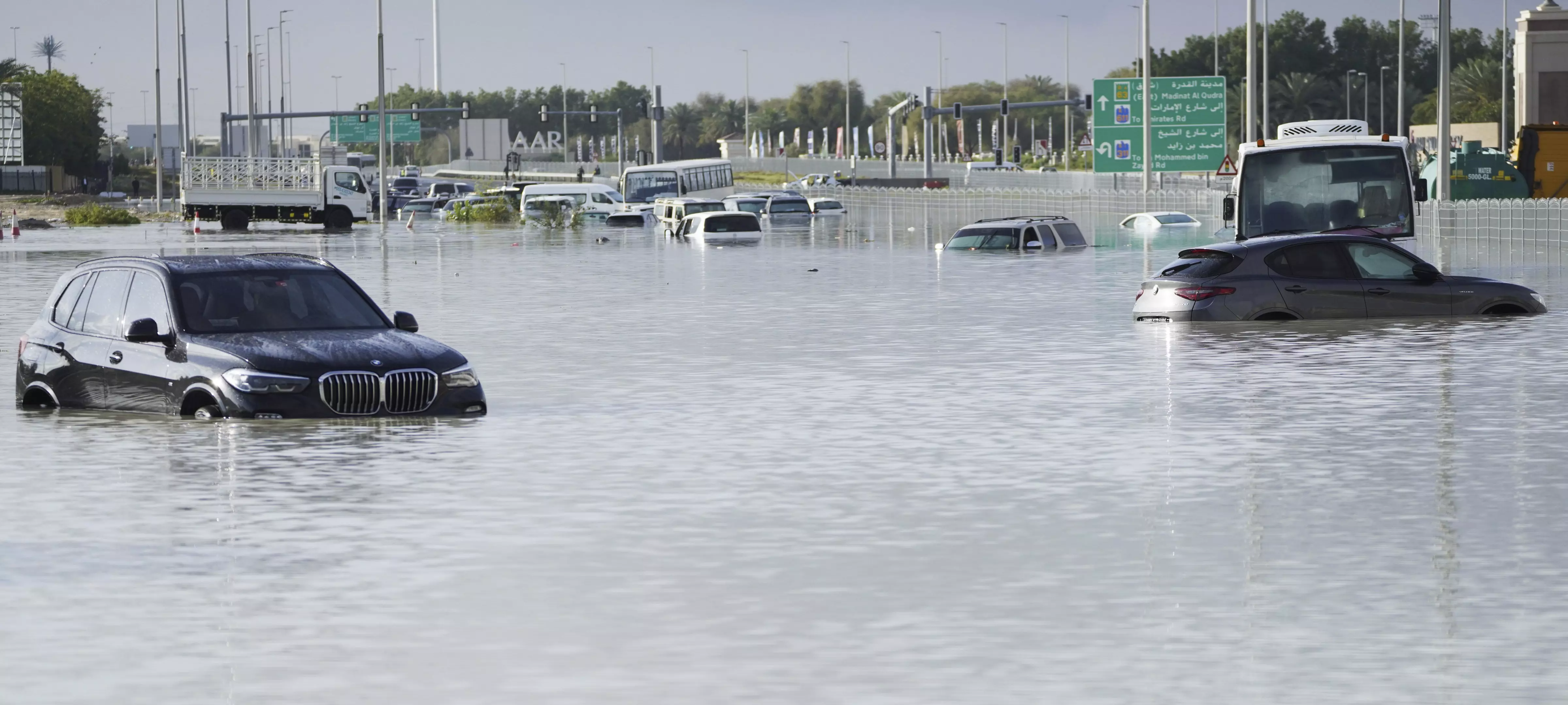
Vehicles sit abandoned on a major road in Dubai covered with floodwater on Wednesday (April 17). Photo: PTI
Explained: Why arid Dubai received a year’s worth of rains in 24 hours
Heavy rains are being attributed to a larger storm system moving across Arabian Peninsula and Gulf of Oman; some experts attribute it to global warming

The desert city of Dubai was brought to a standstill on Tuesday (April 16) after it received rainfall equivalent to a year and a half of what it normally receives, in just 24 hours.
The city was inundated by 142 mm of rainfall in one day, forcing the Dubai International Airport, a major transit point for international flights and a hub for long-haul carrier Emirates, to cancel and divert multiple flights. The airport sees and average rainfall of 94.7 mm every year.
The unprecedented rains also left Dubai’s major highways flooded, stranding several vehicles and their occupants. Schools have been shut and the UAE government has issued warnings urging people to stay at home and to leave only “in cases of extreme necessity”.
Climate change the culprit
The heavy rains are being attributed to a larger storm system moving across the Arabian Peninsula and the Gulf of Oman. The same system caused heavy rains in neighbouring Oman and the south-eastern parts of Iran during the past few days, killing at least 18 people in the former.
Some experts attributed the unusual rainfall to the effects of global warming, with Friederike Otto of the Grantham Institute for Climate Change at Imperial College, London telling AFP that “it is highly likely that the deadly and destructive rain in Oman and Dubai was made heavier by human-caused climate change”.
Cloud seeding
A report by Bloomberg said cloud seeding was also partly responsible for the extreme wet weather. Ahmed Habib, a meteorologist, said seeding planes carried out seven missions over the past two days.
The United Arab Emirates (UAE) is one of the driest and hottest locations on earth, and the country in 2002 pioneered the use of cloud seeding technology to increase precipitation to address its water security issues. The technology involves implanting tiny particles and chemicals like potassium iodide or silver iodide into the atmosphere using aircraft or helicopters to generate more rain from clouds.
The success of this method depends on the availability of moisture-laden clouds and favourable wind patterns.
However, the process of cloud seeding also comes with its own set of risks. The regions where this technique is deployed usually do not have the necessary infrastructure to withstand the additional rainfall that is generated. This often leads to floods and related disasters.
Lack of infrastructure
The UAE is an arid region with little rainfall, and it receives rain generally during the cooler winter months. It is not prepared for flood-like situations, with its roads and buildings lacking storm-water drains that would help drain the water away. So when it is subjected to an unprecedented downpour, the system is not built to handle the extra influx of water resulting in water logging.

